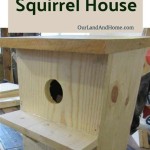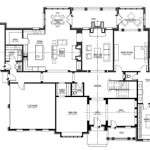House framing plans are detailed blueprints that guide the construction of a home’s framework. They specify the dimensions, materials, and connections of the structural elements, including walls, floors, ceilings, and roofs. These plans provide a roadmap for builders to ensure the stability and durability of the structure.
For instance, a house framing plan for a two-story home might include precise measurements for the exterior walls, the spacing and size of studs, the location of windows and doors, and the slope and joist layout for the roof. By following these plans, builders can ensure that the walls are plumb, the floors level, and the roof weathertight.
In the following sections, we will delve into the key components of house framing plans, their importance in construction, and how they influence the overall structural integrity of a home.
House framing plans provide detailed instructions for constructing the structural framework of a home. Here are ten important points to consider:
- Define structural components
- Specify materials and dimensions
- Provide connection details
- Ensure structural integrity
- Guide construction process
- Comply with building codes
- Facilitate accurate estimation
- Allow for customization
- Document design intent
- Facilitate communication
Understanding and adhering to house framing plans is crucial for the successful construction of a safe and durable home.
Define structural components
House framing plans clearly define the structural components that make up the framework of a home. These components include:
- Walls: The vertical elements that enclose the space and provide support for the roof and floors.
- Floors: The horizontal surfaces that provide support for occupants and furnishings.
- Ceilings: The overhead surfaces that define the upper boundary of a room.
- Roofs: The sloped or flat surfaces that cover the top of the house and protect it from the elements.
Each of these components is further defined by its specific dimensions, materials, and connections to other elements.
Specify materials and dimensions
House framing plans specify the materials and dimensions of each structural component in detail. This information is crucial for ensuring the strength and durability of the home.
The materials used in house framing typically include:
- Wood: The most common material used for framing, available in various species and grades.
- Steel: Used for beams, columns, and other load-bearing elements where strength is paramount.
- Concrete: Used for foundations, slabs, and other components that require high compressive strength.
The dimensions of each component are carefully calculated to meet specific structural requirements. These dimensions include:
- Wall height and length: Determined by the height and size of the rooms.
- Floor joist spacing and size: Calculated to support the anticipated loads.
- Roof rafter length and pitch: Designed to shed water and support the weight of the roofing materials.
By specifying the materials and dimensions of each structural component, house framing plans provide builders with the necessary information to construct a safe and structurally sound home.
In addition to the materials and dimensions, house framing plans also specify the connections between different components. This information ensures that the structural elements are properly joined together to create a stable and durable framework.
Provide connection details
House framing plans provide detailed information about how the different structural components are connected to each other. This information is crucial for ensuring the stability and strength of the home.
- Wall-to-floor connections: These connections ensure that the walls are securely attached to the floor joists, preventing them from buckling or collapsing.
- Floor-to-ceiling connections: These connections provide support for the ceiling joists and ensure that the floors are level and stable.
- Roof-to-wall connections: These connections securely attach the roof rafters to the top of the walls, preventing the roof from collapsing or being blown off by strong winds.
- Truss connections: Trusses are prefabricated structural elements often used in roof construction. House framing plans provide detailed instructions on how to connect the trusses to each other and to the walls.
By providing clear and precise connection details, house framing plans help builders ensure that the structural components of the home are properly joined together, creating a safe and durable structure.
Ensure structural integrity
One of the primary purposes of house framing plans is to ensure the structural integrity of the home. These plans provide detailed instructions on how to construct the framework of the house in a way that ensures it can withstand various loads and forces without collapsing or failing.
House framing plans take into account factors such as the weight of the building materials, the anticipated live and dead loads (e.g., furniture, occupants), and the potential for natural disasters such as earthquakes and hurricanes. The plans specify the appropriate materials, dimensions, and connections for each structural component to ensure that the framework is strong enough to resist these loads and forces.
For example, in areas prone to earthquakes, house framing plans may require the use of stronger materials such as steel reinforced concrete for the foundation and walls. The plans may also specify additional bracing and shear walls to resist lateral forces during an earthquake.
In areas prone to hurricanes, house framing plans may require the use of hurricane straps and clips to connect the roof trusses to the walls and foundation. These straps and clips help to prevent the roof from being torn off by high winds.
Guide construction process
House framing plans provide a step-by-step guide for builders to follow during the construction process. These plans help to ensure that the home is built in a safe and efficient manner.
The framing plans include detailed instructions on how to lay out the foundation, erect the walls, install the floors, and construct the roof. The plans also specify the materials to be used and the proper construction techniques to follow.
By following the house framing plans, builders can avoid costly mistakes and ensure that the home is built to code. The plans also help to streamline the construction process, making it more efficient and less time-consuming.
In addition to providing a guide for the construction process, house framing plans also serve as a valuable communication tool between architects, engineers, and builders. The plans help to ensure that everyone involved in the project is on the same page and that the home is built according to the design intent.
Comply with building codes
House framing plans must comply with applicable building codes to ensure the safety and habitability of the home. Building codes are regulations established by local, state, or national authorities to ensure that buildings are constructed in a safe and structurally sound manner.
- Structural safety: House framing plans must comply with building codes to ensure that the home can withstand the anticipated loads and forces, such as gravity, wind, and earthquakes. The plans must specify the appropriate materials, dimensions, and connections for each structural component to meet the code requirements.
- Fire safety: Building codes include requirements for fire-resistant construction to minimize the risk of fire and protect occupants in the event of a fire. House framing plans must comply with these requirements by specifying fire-resistant materials for the framing, walls, and ceilings.
- Energy efficiency: Building codes often include energy efficiency requirements to reduce energy consumption and promote sustainability. House framing plans must comply with these requirements by specifying energy-efficient materials and construction methods.
- Accessibility: Building codes may include accessibility requirements to ensure that homes are accessible to people with disabilities. House framing plans must comply with these requirements by providing accessible features such as ramps, wider doorways, and grab bars.
By complying with building codes, house framing plans help to ensure that the home is safe, habitable, and meets the minimum standards for construction.
Facilitate accurate estimation
House framing plans facilitate accurate estimation of the materials and labor required to construct a home. This information is crucial for contractors to develop accurate bids and for homeowners to budget for the project.
The plans provide detailed specifications for each structural component, including the dimensions, materials, and connections. This information allows contractors to calculate the quantities of materials needed, such as lumber, nails, and hardware. The plans also include instructions for the construction process, which helps contractors estimate the labor hours required to complete the project.
Accurate estimation is essential for avoiding cost overruns and delays during construction. By providing detailed information about the materials and labor required, house framing plans help contractors and homeowners make informed decisions and plan for the project accordingly.
In addition to facilitating accurate estimation, house framing plans also help to minimize waste and improve efficiency during construction. By providing clear instructions and specifications, the plans help to ensure that materials are used correctly and that there is minimal rework or wasted materials.
Overall, house framing plans play a vital role in facilitating accurate estimation and ensuring the successful construction of a home.
Allow for customization
House framing plans allow for customization to meet the specific needs and preferences of homeowners. This flexibility is important because it enables builders to create homes that are tailored to the unique requirements of each individual or family.
Customizable features in house framing plans include:
- Room layout: The plans can be modified to change the size, shape, and arrangement of rooms to accommodate specific needs, such as the addition of a home office or a larger kitchen.
- Exterior design: The plans can be customized to alter the exterior appearance of the home, such as changing the roofline, adding a porch or deck, or incorporating different siding materials.
- Structural features: The plans can be modified to accommodate specific structural requirements, such as the addition of a basement, a garage, or a sunroom.
- Energy efficiency: The plans can be customized to incorporate energy-efficient features, such as additional insulation, high-performance windows, and solar panels.
By allowing for customization, house framing plans provide homeowners with the flexibility to create a home that meets their unique needs and preferences, while still adhering to the overall structural integrity and safety requirements.
In addition to the above, house framing plans can also be customized to meet specific site conditions. For example, the plans can be modified to account for sloping terrain, narrow lot sizes, or other site constraints. This flexibility ensures that the home can be adapted to fit the unique characteristics of the building site.
Document design intent
House framing plans document the design intent of the architect or engineer. They provide a clear and concise representation of the intended structural framework of the home.
- Convey the structural concept:
The plans communicate the overall structural concept of the home, including the types of structural systems used, the load paths, and the distribution of forces throughout the structure.
- Specify material selection and dimensions:
The plans specify the materials to be used for each structural component, along with their dimensions and properties. This information ensures that the structure is built according to the design intent and meets the required performance criteria.
- Provide construction details:
The plans include detailed instructions on how to construct the structural framework, including the connections between different components and the sequence of construction. These details are essential for ensuring the proper assembly and integrity of the structure.
- Facilitate coordination:
House framing plans serve as a coordination tool for different trades involved in the construction process. They provide a common reference point for architects, engineers, contractors, and inspectors to ensure that everyone is working towards the same design intent.
By documenting the design intent, house framing plans provide a clear roadmap for the construction of the home’s structural framework. They help to ensure that the home is built in accordance with the architect’s or engineer’s vision and meets the intended structural performance requirements.
Facilitate communication
House framing plans facilitate communication among various stakeholders involved in the construction process. They provide a common language and reference point for architects, engineers, contractors, and inspectors to discuss, coordinate, and execute the construction of the home’s structural framework.
- Coordination among trades:
House framing plans serve as a central document that all trades involved in the construction process can refer to. This helps to ensure that everyone is working from the same set of information and that there is a clear understanding of the intended structural design.
- Resolution of conflicts:
In the event of any conflicts or discrepancies during construction, house framing plans can be used as a reference to resolve the issues. The plans provide a clear record of the design intent and the specified materials and construction methods, helping to minimize misunderstandings and disputes.
- Communication with homeowners:
House framing plans can be used to communicate the structural design and construction process to homeowners. By reviewing the plans, homeowners can gain a better understanding of how their home is being built and the materials and methods being used.
- Future reference and maintenance:
House framing plans serve as a valuable reference document for future maintenance and renovations. They provide a detailed record of the structural framework of the home, which can be useful for planning any future modifications or repairs.
Overall, house framing plans play a crucial role in facilitating communication and ensuring a smooth and coordinated construction process. They provide a common reference point for all stakeholders involved and help to minimize misunderstandings and conflicts.










Related Posts








